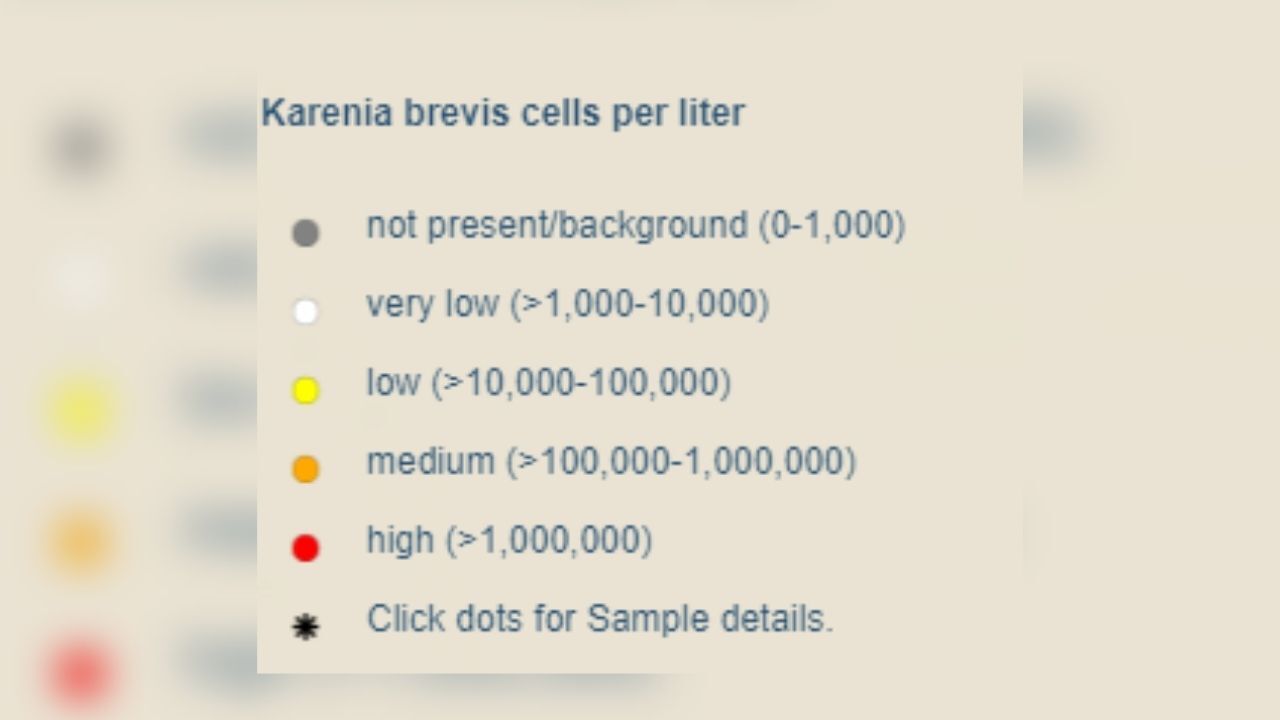Florida Fish and Wildlife says red tide is present at several Sarasota County beaches.
Signs are being placed at the following beaches Thursday to advise the public that red tide is present:
- Longboat Key
- Bird Key Park (Ringling Causeway)
- North Lido Beach
- Lido Casino
- South Lido
- Siesta Beach
- Turtle Beach
- Nokomis Beach
- North Jetty Beach
According to FWC, the red tide organism, Karenia brevis, was detected at background to medium concentrations in Sarasota County.

FWC monitors red tide blooms and posts weekly sample updates here. FWC also does two weekly updates here with a sampling map that's updated every day.

What is red tide?
According to FWC, a red tide or harmful algal bloom is a higher-than-normal concentration of a microscopic alga (plantlike organism).
In Florida and the Gulf of Mexico, the species that causes most red tides is Karenia brevis, or K. brevis.
Red tides are nothing new, they've been documented along Florida's gulf coast since the 1840s and in the southern Gulf of Mexico as far back as the 1700s.
How long do they last?
FWC says red tides can last for a little as a few weeks or longer than a year. They can ease up then reoccur.
Why are they harmful?
Many red tides produce toxic chemicals that affect marine life and humans. FWC says K. brevis produces brevetoxins that can affect the central nervous system of fish and other vertebrates, causing these animals to die.
FWC says wave action can break open K. brevis cells and release the toxins into the air, which can cause respiratory irritation.
Health and safety
Respiratory irritation caused by red tide is usually temporary but for people with things like asthma and COPD serious illness can happen, FWC says.
Swimming during red tide is safe for most people but it can cause skin irritation and burning eyes for some.
Check current beach conditions
You can check the current status of area beaches using the Mote Marine Lab's Beach Conditions Reporting System.


